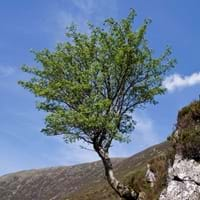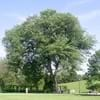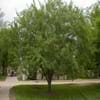Life Span
Perennial
Perennial
Origin
Eastern Asia, China
Asia, Europe, Northern Africa
Types
Candleberry tree
Sorbus aucuparia fenenkiana, Sorbus aucuparia glabrata, Sorbus aucuparia praemorsa
Habitat
Saline Soils, Upland, Upland soils
Temperate Regions
USDA Hardiness Zone
8-10
3-7
Sunset Zone
H2, 8, 9, 12, 13, 14, 15, 16, 18, 19, 20, 21
A1, A2, A3, 1a, 1b, 2a, 2b, 3a, 3b, 4, 5, 6, 7, 8, 9, 10, 14, 15, 16, 17
Habit
Oval or Rounded
Oval or Rounded
Flower Color
Yellow
White
Flower Color Modifier
Bicolor
Bicolor
Fruit Color
White, Ivory
Orange, Yellow
Leaf Color in Spring
Green
Green
Leaf Color in Summer
Green
Green
Leaf Color in Fall
Yellow, Red, Orange
Dark Green
Leaf Color in Winter
-
Dark Green
Leaf Shape
Heart-shaped
Pinnate
Plant Season
Spring, Summer, Fall
Spring, Fall
Sunlight
Full Sun
Full Sun, Partial Sun
Type of Soil
Clay, Loam, Sand
Clay, Loam, Sand
The pH of Soil
Acidic, Neutral, Alkaline
Acidic, Neutral
Soil Drainage
Average
Average
Bloom Time
Spring
Late Spring
Tolerances
Cold climate, Drought, Pollution, Salt
-
Where to Plant?
Ground
Ground
How to Plant?
Grafting, Seedlings, Stem Planting, Transplanting
Budding, Grafting, Stem Cutting
Plant Maintenance
Medium
Medium
Watering Requirements
Average Water Needs, Medium, Requires watering in the growing season
Do Not over Water, Water in the early morning hours
In Summer
Lots of watering
Lots of watering
In Spring
Moderate
Moderate
In Winter
Average Water
Average Water
Soil pH
Acidic, Neutral, Alkaline
Acidic, Neutral
Soil Type
Clay, Loam, Sand
Clay, Loam, Sand
Soil Drainage Capacity
Average
Average
Sun Exposure
Full Sun
Full Sun, Partial Sun
Pruning
Remove damaged leaves, Remove dead leaves, Remove dead or diseased plant parts, Remove deadheads
Remove dead or diseased plant parts, Trim each shoot back to the first set of leaves
Fertilizers
fertilize in growing season, Less fertilizing, Nitrogen
All-Purpose Liquid Fertilizer, Doesn't require fertilization when grown in rich soil
Pests and Diseases
Insects, Red blotch
Aphids, blister mites, Canker, fireblight, sawflies, Silver leaf
Plant Tolerance
Cold climate, Drought, Salt
-
Flowers
Insignificant
Yes
Flower Petal Number
Single
Single
Foliage Texture
Medium
Fine
Foliage Sheen
Matte
Matte
Allergy
Nausea, Toxic, Vomiting
Anxiety, Depression, High blood cholestrol, High blood pressure, Pain, Stress
Aesthetic Uses
Landscape Designing
along a porch, deck or patio, Showy Purposes
Environmental Uses
Absorbs greenhouse gases, Absorbs huge amounts of CO2, Air purification, Amazing growth rate, Erosion control, Food for insects, Forms dense stands, Nesting sites for birds, No fertilizer, pesticides, or herbicides needed, Prevent Soil Erosion, Shadow Tree, Shelter for wildlife, Soil protection, soil stabilisation, Used to establish native woodland, Very little waste, Wildlife, Windbreak
Air purification, Food for birds, Shadow Tree
Medicinal Uses
Boils
Diarrhea, Inflammation, Laxative, Urinary tract problems, Vitamin C
Part of Plant Used
Fruits, Leaves, Seeds
Bark, Fruits, Wood
Other Uses
Employed in herbal medicine, Showy Purposes, Used as firewood, Used for its medicinal properties
Used for its medicinal properties, Used for woodware
Used As Indoor Plant
No
No
Used As Outdoor Plant
Yes
Yes
Garden Design
Feature Plant, Shade Trees, Street Trees
Feature Plant, Mixed Border, Topiary / Bonsai / Espalier
Botanical Name
TRIADICA sebifera
Sorbus aucuparia
Common Name
Chinese Tallow
Rowan, Mountain ash
In Hindi
चीनी तेल
रोवाण पौधा
In German
chinesisch Talg
Rowan Tree
In French
chinesisch Talg
Rowan Tree
In Spanish
suif chinois
Rowan Tree
In Greek
κινέζικο ζωικό λίπος
Rowan Tree
In Portuguese
sebo chinesa
Árvore de Rowan
In Polish
chiński łój
Rowan Tree
In Latin
Chinese adipe
Rowan ligno
Phylum
Embryophyta
Magnoliophyta
Class
Magnoliopsida
Magnoliopsida
Order
Malpighiales
Rosales
Family
Euphorbiaceae
Rosaceae
Clade
Angiosperms, Eudicots, Rosids
Angiosperms, Eudicots, Rosids
Subfamily
Euphorbioideae
-
Importance of Chinese Tallow and Rowan Tree
Want to have the most appropriate plant for your garden? You might want to know the importance of Chinese Tallow and Rowan Tree. Basically, these two plants vary in many aspects. Compare Chinese Tallow and Rowan Tree as they differ in many characteristics such as their life, care, benefits, facts, etc. Every gardener must at least have the slightest clue about the plants he wants to plant in his garden. Compare their benefits, which differ in many ways like facts and uses. The medicinal use of Chinese Tallow is Boils whereas of Rowan Tree is Diarrhea, Inflammation, Laxative, Urinary tract problems and Vitamin C. Chinese Tallow has beauty benefits as follows: while Rowan Tree has beauty benefits as follows: .
Compare Facts of Chinese Tallow vs Rowan Tree
How to choose the best garden plant for your garden depending upon its facts? Here garden plant comparison will help you to solve this query. Compare the facts of Chinese Tallow vs Rowan Tree and know which one to choose. As garden plants have benefits and other uses, allergy is also a major drawback of plants for some people. Allergic reactions of Chinese Tallow are Nausea, Toxic and Vomiting whereas of Rowan Tree have Anxiety, Depression, High blood cholestrol, High blood pressure, Pain and Stress respectively. Having a fruit bearing plant in your garden can be a plus point of your garden. Chinese Tallow has no showy fruits and Rowan Tree has showy fruits. Also Chinese Tallow is not flowering and Rowan Tree is flowering. You can compare Chinese Tallow and Rowan Tree facts and facts of other plants too.





